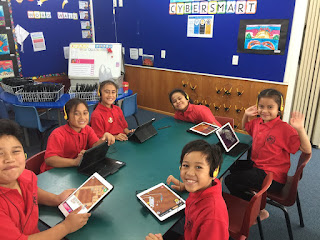This term our Manaiakalani focus across the cluster is on create and more specifically how creativity empowers learning.
To start off term to with a bang Ms Eadie and I applied these principles to our first week of term. We wanted learners to create to see the different simple machines and focus at play. We thought carefully about each tasking making sure we were using the senses to engage the learners brains.
Throughout this immersion which took place over a number of day with students working in small groups. Learners created physically and digital. Here are some examples of the activities they engaged in.
Art
We had three activities that I could call art activities however I they were also about thinking, folding and testing ideas.
1. Paper plane, a tried and true way of examining focuses and motion.
2. Marble run piece, Each student design their own piece which would later become a large marble run on our classroom wall.
3. Simple machines, learners thought carefully about what pathways in their brains might look like if depicted by a range of interacting simple machines.
Building
We had three activities I would call building. These were all very different from each other.
1. Creating ramps for car. This was a very open task and different group made very different things. They explored how different slopes could change the speed of the car.
2. iPad building task. These were Apps design to provide simple machines that student could put in different orders to explore how movement occurred.
3. Marble run, students used the pieces to construct their own towers and test them to see how the marble moved.
Movement, well there was movement in all our activities. In the art activities through learners hand and arms. In the building tasks moving around to find the material and creating with them. The last task was design to be a movement task.
1. Ten Pin bowling, students engaged in ten pin bowling aiming to use their bodies to throw the ball and hit the pins. It was great to see lots of creative thinking about the best way to bowl the ball.














